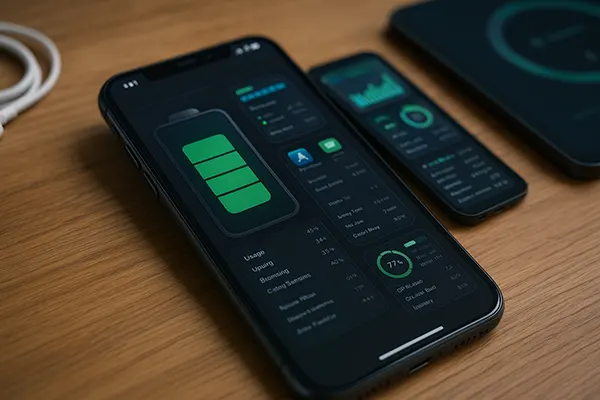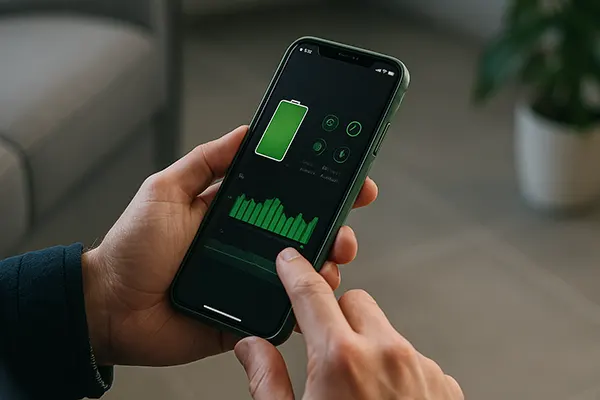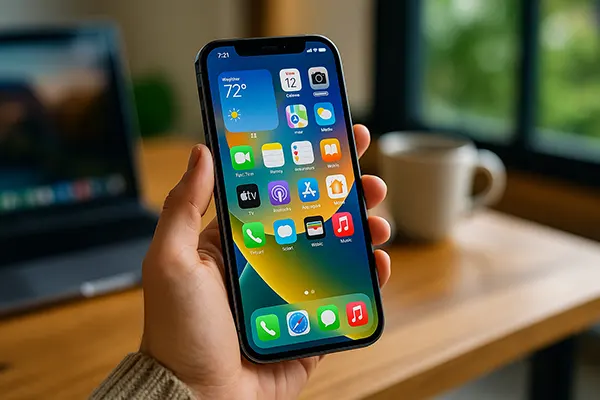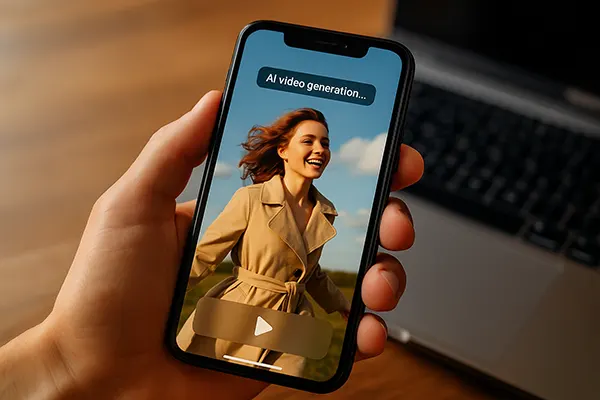Top 7 iPhone Apps to Maximise Battery Life in 2025

In 2025, battery performance remains a top concern for iPhone users, especially as devices handle more powerful apps and background processes. Fortunately, several applications have been designed to help monitor, optimise, and extend battery life. Below we’ll explore the top 7 iPhone apps that actively help users reduce battery consumption and get more out of each charge.
Battery-Saving Apps That Really Work
One of the leading tools in this category is Battery Life Doctor. This app provides in-depth statistics about battery health, current consumption, and background usage. Its user-friendly interface allows quick scans to detect battery-draining apps and recommends actions to improve efficiency. The tool also evaluates charge cycles, offering a holistic view of long-term battery performance.
Another popular option is Battery HD+. This app stands out for its detailed usage estimates — you can see how long your battery will last for watching videos, browsing, or calling. Battery HD+ helps users plan their usage throughout the day and avoid running out of power during critical moments. The precise calibration options also make it ideal for older iPhones.
Greenify, though originally for Android, now has iOS-compatible counterparts. These apps identify and suspend background processes that silently consume energy. While iOS restricts certain automation features, tools inspired by Greenify are gaining traction for their ability to spot rogue apps and reduce background refresh, particularly useful for devices with older batteries.
How These Apps Operate in Background
All of the top battery apps are designed to work quietly in the background, collecting data and analysing trends without excessive drain themselves. They often make use of iOS’s low-energy background activity allowances to minimise their own footprint while tracking other apps’ behaviour. For example, Battery Life Doctor runs periodic checks rather than constant scanning.
Apps like Activity Monitor and System Status Lite work similarly by integrating with iOS system APIs. They gather data on CPU usage, memory allocation, and thermal conditions. This allows the user to understand which apps or system features are responsible for spikes in battery usage, enabling smarter decisions around app usage and settings adjustments.
Importantly, these apps use iOS’s built-in push mechanisms instead of polling, which helps to save energy. They also pause when the device is idle or not in use, aligning with Apple’s strict battery and background task policies introduced in recent iOS versions.
Real-World Scenarios Where These Apps Help
Consider someone who frequently uses FaceTime, maps, and fitness trackers. Their iPhone might run out of battery before the day ends. With an app like Battery HD+, they can check estimated usage times based on current battery percentage and adjust their behaviour. This could mean lowering screen brightness or disabling location tracking during inactivity.
Frequent travellers benefit from apps like System Activity Monitors. When roaming, background syncing and network scanning can cause unexpected drains. These apps allow the user to identify which services are overly active and adjust system settings accordingly. This is especially helpful when away from a power source for extended periods.
For users in colder climates, where temperature impacts battery health, battery apps can alert users when the device’s temperature reaches critical thresholds. They can then take preventive actions such as moving the phone into a warmer environment or reducing processor-intensive tasks like gaming or video editing.
Limitations and iOS Restrictions
While these apps are extremely useful, it’s important to note that Apple’s strict app policies limit what developers can do. Unlike Android, iOS does not allow full automation or third-party apps to control system-level behaviour like force-closing background tasks. However, apps can suggest steps or direct users to settings where manual changes can be made.
Another limitation is in power diagnostics. While apps can read from Apple’s battery API, some data remains restricted to preserve user privacy. As a result, battery apps might provide estimated values based on usage patterns rather than exact figures. Nonetheless, these estimations are highly reliable thanks to machine learning integration.
Moreover, users must allow proper permissions for these apps to operate at full potential. If access to location, motion, or usage data is denied, many of their features become less effective. Users should always check app settings post-installation to ensure optimal performance and data access.

Choosing the Right App for Your Needs
Different battery-saving apps cater to different types of users. For data lovers and tech-savvy individuals, System Status Lite provides graphs and technical readouts for deep battery insights. It’s suitable for advanced users who want complete transparency on their device’s energy usage.
Casual users may prefer Battery HD+ or Battery Life Doctor due to their simplified interfaces and clear recommendations. These apps distil complex system data into easy-to-read tips, making them accessible to anyone, regardless of tech experience. They’re ideal for everyday usage without any learning curve.
Users who are highly active on social media or stream a lot of content should consider apps that focus on screen time and app usage analytics. Tools that track screen-on time and provide app-specific consumption breakdowns help users prioritise which apps to limit or use under battery-saving mode.
Future of Battery Management on iOS
Looking ahead, Apple continues to refine how iOS manages power and background processes. In iOS 18, expected later this year, Apple is introducing enhanced battery health indicators and deeper user insights into power consumption by apps, which will reduce the need for third-party monitoring apps.
That said, apps like Battery Life Doctor and System Status will still hold value by offering alternative views and metrics not available in iOS’s native settings. Developers are already preparing updates to align with the latest iOS features while preserving compatibility with older devices.
Finally, as iPhones get smarter with AI-powered management, the role of battery apps may evolve into more preventive tools — predicting and mitigating battery drain before it becomes noticeable. For now, however, having the right app installed can mean hours of extra screen time daily.


